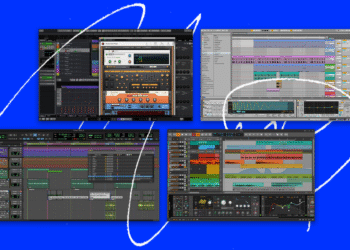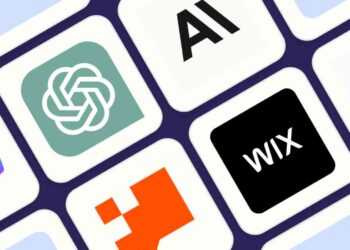Personalization is no longer a luxury—it’s a necessity.
Audiences today expect tailored experiences whether they’re reading blog posts, shopping online, or scrolling through social media. The challenge? Creating personalized content at scale without spending hours analyzing data manually.
AI leverages machine learning, behavioral analysis, and predictive algorithms to deliver the right content to the right audience at the right time.
It’s how Netflix predicts your next binge-worthy show, how Amazon recommends products you never knew you needed, and how blogs and websites keep you engaged.
If you’re new to AI-driven content personalization, this guide will break down everything you need to know—from how it works to the best tools for getting started.
What is AI-Powered Content Personalization?
AI-powered content personalization is the process of using artificial intelligence and machine learning to tailor content for individual users. Instead of a one-size-fits-all approach, AI customizes blog posts, product recommendations, emails, and social media feeds based on user behavior and preferences.
How AI personalizes content:
- Analyzing user data (clicks, time on page, search history).
- Predicting user interests based on past interactions.
- Delivering real-time, customized experiences on websites, apps, and emails.
💡 Example: Ever notice how Spotify curates playlists just for you? That’s AI content personalization in action.
Why is AI-Powered Personalization Important?
Users don’t just appreciate personalization—they expect it. Studies show:
- 80% of consumers are more likely to buy from brands that offer personalized experiences.
- 60% of users abandon websites if they don’t find relevant content quickly.
- AI-powered personalization can increase conversion rates by 30-50%.
When done right, personalization boosts engagement, increases sales, and strengthens audience loyalty—all while reducing content overload.
💡 Example: Amazon’s AI-driven recommendation engine generates 35% of its total sales by showing users exactly what they want.
How AI Personalizes Content Across Different Channels?
AI-powered personalization isn’t limited to one type of content. It works across websites, emails, blogs, and social media.
AI for Website Personalization
AI-driven tools customize homepages, landing pages, and product pages based on:
- User location (showing local offers or events).
- Browsing history (suggesting similar products or blog posts).
- Real-time behavior (offering pop-ups based on user activity).
💡 Example: Netflix’s homepage changes dynamically based on what you watch, ranking shows based on your personal preferences.
AI for Email Personalization
AI-powered email tools customize subject lines, recommendations, and send times by:
- Analyzing open rates to determine what type of content users engage with.
- Adjusting email content based on past purchases or site visits.
- Sending emails at optimal times for each recipient.
💡 Example: AI in HubSpot and Mailchimp can automate personalized email campaigns, boosting open rates by up to 50%.
AI for Blog & Content Personalization
AI helps recommend the right articles, blog posts, and guides based on:
- Reading habits (suggesting related articles users are likely to enjoy).
- Engagement data (adjusting post formats to fit different user preferences).
- AI-generated summaries to tailor content length and detail level.
💡 Example: AI-powered content personalization is increasingly being used by bloggers to keep readers engaged by showing personalized content recommendations.
AI for Social Media Personalization
Social platforms use AI to optimize content feeds by:
- Analyzing likes, shares, and comments to show relevant posts.
- Recommending content creators or pages similar to what users engage with.
- Optimizing ad placement for personalized promotions.
💡 Example: TikTok’s AI-powered algorithm determines your For You Page based on watch time, likes, and shares.
Best AI Tools for Content Personalization
Getting started with AI-powered personalization is easier with the right tools. Here are some of the best platforms:
- Clearbit – Gathers real-time data to personalize website experiences.
- Dynamic Yield – AI-driven personalization for eCommerce and content.
- Persado – AI-powered tool for generating personalized marketing messages.
- Pathmatics – AI that tracks and personalizes ad campaigns.
- Phrasee – AI for personalized email subject lines and ad copy.
- OneSpot – Uses AI to personalize blog and website content for visitors.
Each of these tools analyzes user behavior in real-time, allowing brands to create more meaningful, engaging experiences.
How to Implement AI-Powered Content Personalization?
Ready to start personalizing your content with AI? Follow these simple steps:
Step 1: Collect and Analyze Data
Before AI can personalize content, it needs data. Track:
✅ Website visits, page views, and clicks.
✅ Email open rates and user interactions.
✅ Past purchases or content consumption habits.
AI uses this data to identify patterns and predict preferences.
Step 2: Choose the Right AI Tool
Pick an AI-powered tool that fits your goals—whether it’s for website personalization, email automation, or content recommendations.
Step 3: Test Personalized Content
Start small by personalizing:
- Blog post recommendations.
- Homepage banners or pop-ups.
- Email subject lines and CTAs.
Track engagement metrics to measure improvements.
Step 4: Optimize and Scale
AI gets smarter over time. As more data is collected, adjust personalization tactics to improve engagement. Use A/B testing to find the best content variations.
💡 Want to see how brands are already succeeding? Check out real-world case studies that showcase how AI-powered content personalization is driving growth.
Future Trends in AI-Powered Personalization
AI content personalization is evolving fast. Here’s what’s coming next:
- Hyper-Personalization – AI will create even more tailored experiences, adjusting content based on real-time user behavior.
- Voice & AI Assistants – AI-driven personalization will extend to voice search and smart assistants like Alexa and Google Assistant.
- AI-Generated Content Customization – AI will rewrite blog posts, ads, and emails in real-time to match different user segments.
The future is all about smarter, real-time personalization that feels natural and seamless.
Final Thoughts
AI-powered content personalization isn’t just for big brands—it’s accessible to bloggers, marketers, and small businesses too. By leveraging AI, you can:
✅ Increase engagement with tailored blog posts and recommendations.
✅ Improve email marketing with AI-driven subject lines and automation.
✅ Boost sales and conversions through personalized offers and product suggestions.
If you’re not using AI for content personalization yet, now is the time to start. The right AI tools can help you deliver the right content to the right people—at the right time.








